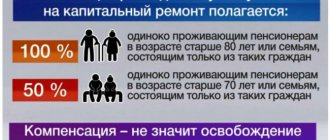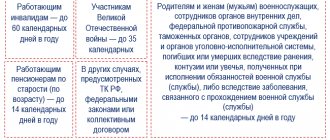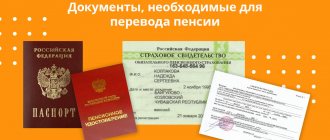Despite the fact that the funded part of the pension is “frozen”, you can receive income from the previously accumulated amount. Is it realistic for an ordinary person, not burdened with financial knowledge, to manage his future pension?
The insurance pension system in Russia is based on the principles - the more the employer paid insurance premiums for the employee, the higher the employee’s pension. As we have already noted, the employee himself can participate in the program for co-financing a future pension. In this case, the person pays insurance premiums at his own expense.
And if it is sometimes difficult for an employee to influence the size of his mandatory part of the pension, then the funded part of the pension can be managed.
A few words about what the funded part of a pension is.
What is the funded part of a pension?
Firstly, in order to form the funded part of the pension, the employee must be officially employed, and the employer must pay insurance premiums for him. Or the employee sent his own funds to the Pension Fund.
But after 2014, citizens’ savings account is “frozen” and all insurance premiums are transferred only to the insurance pension.
Secondly, citizens born in 1967 and later can have a funded pension, as well as participants in the state pension co-financing program and citizens who have allocated maternity capital to form a funded part.
Important!
Based on this, a pension savings account can increase today only thanks to the profitability of the Pension Fund or Non-State Pension Fund.
How to choose a non-state pension fund
Before figuring out where to transfer the funded part of your pension, it is advisable to study in more detail the features of such a procedure. The total amount of the employee's future pension is formed from the amount of contributions made monthly by his employer. According to Federal Law No. 424, citizens of the Russian Federation have every right to manage such savings.
Among the available options is the transfer of the funded part of the pension to the insurance or special non-state funds - NPFs, which have the necessary licenses to provide such services. At the same time, a citizen can not only transfer savings to a non-state pension fund from the state fund, but also freely move them between similar organizations, or return them to the Pension Fund again.
Since 2014, due to the difficult economic situation, the government decided to suspend the accumulation of such payments, but the ability to manage them was retained. One of the most important aspects of such a procedure is the choice of a suitable non-state pension fund for investment.
When planning to choose the optimal solution for pension investments, it is advisable to study several main types of such organizations:
- captive - formed on the basis of a company, promotes corporate policy and is most often intended for fund employees. Characterized by the predominance of reserves over savings;
- corporate - the level of reliability of the organization directly depends on the number of clients, specializes in the implementation of corporate pension programs of specific companies;
- universal - intended for individuals and legal counterparts;
- territorial - provides its services in a certain region or city, often supported by local authorities.
When choosing, it is important to be guided by an impressive list of company indicators, and not by the promises of its agents. First of all, you should study the investment conditions and compare them with numerous analogues. In addition, it is important to check whether the company has sufficient assets, which will ensure that it has a sufficient level of reliability.
It should be remembered that some NPFs go bankrupt, however, if there is insurance, the savings are compensated to the citizen, with the exception of interest.
If you wish, you can make a rating of where it is better to transfer the funds accumulated under the pension program. Such organizations seem to be the most reliable and also in demand among consumers. Among them:
- Sberbank;
- Gazfond;
- Surgutneftegaz;
- Neftegarant;
- KITFinance.
In order to choose the most reliable option, it is advisable to be guided by the company’s financial ratings. The highest seems to be A++, and the lowest is E. The latter option is unacceptable, since such companies do not have a license to provide these services. All of the above organizations have the highest reliability rating.

To transfer your pension you need to select a non-state pension fund
How to manage the funded part of your pension?
Not all employees who have a funded part of their pension invest it.
The reasons for such passive behavior are different - from banal ignorance to lack of faith in the safety of accumulated savings.
It should be noted that all activities of NPFs are carried out under the control of the state and all deposits of future pensioners are insured. This means that in the event of bankruptcy of a non-state pension fund or deprivation of a license, a person will not lose his accumulated savings. They will return to the Pension Fund.
According to a number of economists, the pension reform in Russia operates according to the MMM principle, which ultimately could lead to the collapse of the entire system.
However, citizens are trying to increase a small part of their funded pension.
How to do it?
An employee can leave his savings portion in the state Pension Fund, or he can transfer it to a non-state pension fund. Moreover, in the latter case, the employee has the right to move from one NPF to another. True, this can be done no more than once every five years without loss of investment income.
Do you want to transfer pension savings to JSC NPF Sberbank?
“On January 1, 2021, a new procedure for changing the insurer for compulsory pension insurance (OPI) came into force, which can be either the Pension Fund of the Russian Federation (PFR) or a non-state pension fund (NPF). Now citizens can submit an application to change their insurer only through the Unified Portal of State and Municipal Services (EPGU) or to the Pension Fund in person or through a representative with a notarized power of attorney. A similar procedure applies when submitting a notice of refusal to change insurer.
To transfer pension savings from the Pension Fund to the NPF or from one NPF to another, it will still be necessary to draw up a compulsory pension agreement with the selected NPF.
From January 1, 2021, the agreement on mandatory security on the part of the NPF can only be signed by the sole executive body - the General Director or the acting General Director. In this connection, agreements on mandatory pension insurance are first signed by the citizen, and then transferred to the General Director of the NPF for signing. The original of the OPS agreement, executed by NPF Sberbank JSC, is returned to the citizen by Russian Post to the address specified when registering the agreement.
After drawing up the OPS agreement, no later than December 1, you must submit an application for the transition. There will be a “cooling-off period” until December 31, during which you can change your mind and stay in the same fund or choose another one. To do this, you will need to submit a notice of refusal to change the insurer or to replace it.
It should be noted that if the insured person submits more than one application for transfer to the Pension Fund within one year without first submitting notices of refusal to change the insurer, the Pension Fund will refuse to satisfy the second and subsequent applications.
The law provides for mandatory informing a citizen about the amount of lost investment income recorded in his account when submitting an application to change the insurer through the EPGU or directly to the Pension Fund. Information about your applications and notifications, the date and method of submitting them, and the decision made can be found on the State Services Portal. Applications received by the Pension Fund in paper form will be independently registered by the institution’s employees on the portal, and they will be displayed in your personal account. At the same time, it will remain possible to obtain the specified information in person at the territorial branch of the Pension Fund or the selected NPF.
In addition, the Pension Fund of the Russian Federation, within one working day from the date of receipt of the application or notification regarding the change of insurer, will send this document to all interested non-state pension funds (from which and to which the citizen is transferring) through the interdepartmental electronic interaction system.
Changes in legislation are designed to eliminate the practice of illegally transferring pension savings to non-state pension funds using false documents and provide citizens with new information opportunities that will help them make more informed decisions when choosing or changing the method of investing their pension savings.”
Which is better: Pension Fund or Non-State Pension Fund?
Let's consider option 1 - the employee did nothing with his funded part, and it remained in the Pension Fund.
The funds of such “silent people” are invested through the state management company Vnesheconombank (VEB). It is clear that VEB invests savings in low-risk assets. At the end of the 1st quarter of 2020, the profitability was 4.61%. Of course, this is a small income, part of which is “eaten up” by inflation.
Let's consider option 2 - the employee entered into an agreement with a non-state pension fund.
Here a person must be active by studying the necessary information about the NPF he has chosen. You cannot focus only on the foundation’s personal website. You need to check:
- NPF register - find out whether the fund participates in the savings insurance program;
- NPF profitability - find out the fund's profitability.
The profitability rating is compiled on the basis of data provided by NPFs, as well as information from the Central Bank of Russia as the regulator of NPF activities.
At the end of 2021, the profitability of some non-state pension funds ranged from 10% to 15% per annum.
- NPF rating - assess the reliability of the fund.
Such ratings are compiled by the largest credit agency, Expert Ra, taking into account the results of the audit, the amount of income and expenses, the strategy for generating income, i.e. where the funds of the future pensioner are invested.
The lifespan of a non-state pension fund, the number of participants and the amount of pension savings are of no small importance.
How to get pension savings when you retire
Unlike an insurance pension, a funded pension in some cases can be received as a lump sum payment. It can also be received by the heirs of a person who accumulated this pension and did not have time to use it.
Ways to receive pension savings:
- One-time payment - if the amount of the funded pension does not exceed 5% of the amount of the insurance pension, as well as for some preferential categories of citizens, including disabled people.
- Term pension payment (for a period of at least 10 years). In this case, the citizen himself sets the period for monthly payments of the funded part of the pension, but this period cannot be less than 120 months.
- Monthly payment . Calculated taking into account a survival period of 20.5 years. The accumulated pension is divided into 246 months. The resulting number is the monthly payment.
When can you apply for a funded pension?
To receive a funded pension, a person must reach the age of 60 and 55 years - men and women, respectively, and also have the insurance period and the amount of so-called points necessary to assign an old-age insurance pension.
Each year of retirement has its own point value. For example, in 2021 a person must have at least 18.6 points. The minimum experience in 2021 is 11 years.
You need to submit an application for a funded pension to the organization where the pension savings are formed. That is, it can be a Pension Fund or a Non-State Pension Fund.
You can apply in person, by mail, through the government services website, MFC. The future pensioner must write an application and attach the necessary set of documents to it.
Pension investing in modern Russia
If a person is employed, the employer independently makes all the necessary contributions, including to the pension fund. These deductions amount to 22% of the total wage fund. Individual entrepreneurs independently pay contributions to the pension fund and social insurance fund.
Table 1. Distribution of pension contributions
| For citizens over 50 years of age | For citizens under 50 years of age |
| 6% – for a substantial part (that which goes to finance payments to current pensioners) | 16% – insurance part. Of these, 6% are solid and 10% are individual. |
| 16% – individual part | 6% – financing of funded pension |
Basically, the pension depends on 3 factors:
- work experience;
- salary;
- the amount of insurance premiums.
Over the past 25 years, 3 pension reforms have been carried out in Russia. The last of them took place in 2015. During this reform, the unified labor pension was abolished. Instead, two different pensions appeared - insurance and funded.
The calculation and payment of pensions in Russia is now regulated by Law No. 400-FZ “On Insurance Pensions” and Federal Law “On Accumulative Pensions” No. 424-FZ.
The retirement age in the Russian Federation in 2021 is 55.5 years for women and 60.5 for men. By 2032, it is planned to increase it to 63 years for women and 65 years for men.
The required work experience for retirement is constantly increasing - in 2015 it was 6 years, by 2024 it should be 15 years.
Citizens born in 1966 and earlier are not entitled to a funded pension. They can increase the size of their pension only by:
- contributions (on a voluntary basis) within the framework of the state. pension savings co-financing programs;
- sending funds from maternal (family) capital to a funded pension.
In fact, the pension structure looks like this:
- 6% is a significant part . This is money that a person will never see and will never get back. They go towards pensions for today's retirees and other expenses.
- 10% – individual insurance part . The amount of accumulated funds can be viewed on the Pension Fund’s website in your personal account or read in the letters that the Pension Fund sends out. The pension amount (based on the accumulated insurance pension) can be calculated using a pension calculator.
- 6% – funded pension. A citizen of the Russian Federation has the right to dispose of this part of the pension. He can leave it at the disposal of the Pension Fund, or he can transfer it to the management of other state or non-state structures.
The only option to increase pension payments is through a funded pension. A citizen of the Russian Federation cannot influence the insurance pension.
The procedure for forming a funded pension
From 1934 to 1990 in Russia, the number of births was always higher than the number of deaths. From the beginning of the 90s of the 20th century until 2012, population growth indicators began to be published in statistical reports with a minus sign.

There are more and more pensioners in the country, and fewer and fewer people working. The “youngest” pensioners since 2015 were born in 1960 (not counting those who retire earlier). The oldest were born in the second and third decades of the twentieth century. Their pensions have long since disappeared into the murky waters of post-Soviet reform. There is no money, but people are alive, and hardly anyone will dare to deny them pension payments. Where does the money for their pensions come from?
The answer is simple: the state has placed this burden on employers. Of the twenty-two percent accrued on each paycheck, only sixteen will go into the employee's retirement account, while six percent is intended to pay current retirees. Thus, out of 55 thousand rubles transferred to the pension fund from the annual salary of one employee, 15 thousand are intended for payments to today's pensioners.









